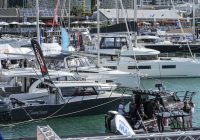Does your lifejacket meet the Australian Standard?
With safety standards set to change in South Australia on 1 January 2025, boaters cannot use lifejackets with the Australian Standard AS1512, AS1499 or AS2260 and will need to look to replace any old standard lifejackets with ones branded with Australian Standard AS4758 to remain compliant. Older standard lifejackets would potentially be greater than 20 years old and can no longer be sold.
It is important that everyone on board your boat has a lifejacket that meets the current standard. Failing to carry or wear a compliant lifejacket carries a maximum penalty of $1250.
Remember to regularly check all lifejackets for wear and tear. Inflatable type lifejackets need to be serviced in line with manufacturer’s instructions – generally once a year.
Lifejackets that are sold for swimming or use in swimming pools should not be used on motorised vessels and unpowered watercraft (such as canoes and kayaks) as they do not meet the Australian Standard.
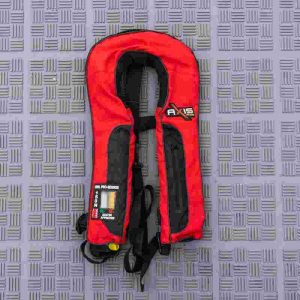
Is your vessel seaworthy?
Heading out on the water this spring? Checking your vessel’s seaworthiness is essential.
But a vessel’s seaworthiness is not just about the physical condition of the boat – it’s also about whether the correct safety equipment is on board. Using the Marine Safety SA safety equipment checker tool is the quickest and easiest way to ensure you have what you need
All vessel owners should know how to:
- change the filter and primer bowl
- clean and change spark plugs
- check the spark plugs are sparking
- check and replace fuses
- check the condition of the propeller
- check the battery.
If anything needs fixing or replacing, do it before you go out.
Follow these handy tips when maintaining your vessel’s structure:
- Check your vessel structure for corrosion, cracks, and general wear and tear. Patch any minor cracks, as well as gouges or chips in fibreglass gel coat. More serious cracks should be repaired by a qualified repairer.
- Keep the hull and decks clean and properly waxed to protect them for longer.
- Ensure fibreglass is regularly cleaned with fresh water and a nonabrasive soap if necessary. Use a soft brush to help remove debris caught in crevices.
- Make sure aluminium and stainless-steel parts are clean and free of corrosion.
- Check all screws, bolts, and other fittings are secure.
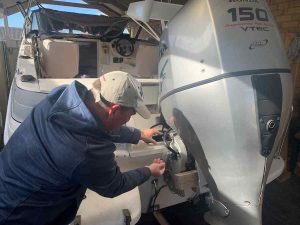
Watch for hazards on the River Murray
Heading out on the River Murray these school holidays? Be aware and watch for hazards.
The River Murray goes through regular natural changes due to varying flows and events, such as the flood event of late 2022 and early 2023.
This can lead to changing depths, shallow waters, sand bars and underwater hazards. However not all hazards and sand bars are marked. It’s up to the vessel operator to navigate with caution, travel at a safe speed and choose appropriate locations to water ski.
If you see a hazard in the water or people operating unsafely you can report it to the Marine Safety SA team via the online portal.
Please take care on the River Murray so we can all have an enjoyable Spring and Summer.
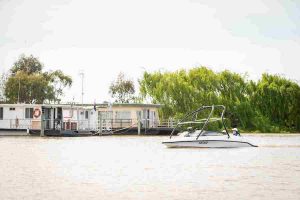
Royal Life Saving Australia – National Drowning Report 2024
Royal Life Saving Australia, in partnership with Surf Life Saving, recently released their National Drowning Report 2024.
The report sadly showed 323 people drowned in Australian waterways between 1 July 2023 and 30 June 2024. Twelve of these deaths occurred in South Australia, three while boating.
Anyone can drown, but no one should.
Thinking about these three things each time you head out can help prevent drowning:
Marine Safety SA is committed to education and compliance operations throughout the State, with the primary focus to promote boating safety.
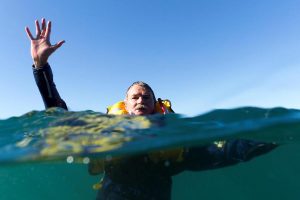
Riverland and Eyre Peninsula Field Days
The Marine Safety team attend events throughout the year to help raise awareness of boating safety and to share helpful tips with boaters.
At the Riverland and Eyre Peninsula field days the team gave away five lifejackets to lucky winners who subscribed to the Marine Safety SA newsletter or were a part of the local children’s trails.
Children who participated in the local trails also picked up their very own Marine Safety SA sports drink bottle. The team estimates they gave away 850 drinks bottles across both events – so many great opportunities to interact with the local community.
Next on the team’s calendar is the Club Marine SA Boat & Fishing Show at the Adelaide Showgrounds from Friday, 25 to Sunday, 27 October 2024. Come and say hello! Marine Safety SA are always ready to answer your boating safety questions.
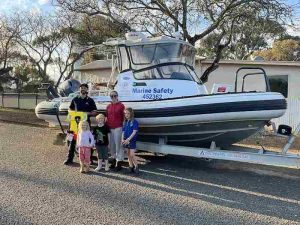
Eyre Peninsula Field Day winner Emmett and his family receiving his lifejacket from Marine Safety team member Loi
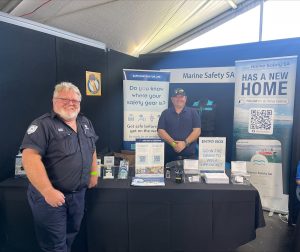
Marine Safety SA team members Sean and Pat at the Riverland Field Day event in Barmera
Safe vessel speeds – are you sharing the water safely?
Knowing designated speed limits, how to judge a safe speed and understanding your duty of care can help keep everyone safe on the water.
Last year, more than half of the community safety concerns received by Marine Safety SA involved reports of speeding or unsafe operation.
Speed limits apply where high-speed boats may be a hazard to other water users. Various harbors, areas of the Port Adelaide River, sections of the River Murray, metropolitan beaches and some country beaches are subject to speed limits.
You must also always keep to:
- 4 knots or under within 50 metres of a person swimming in the water or on unpowered watercraft such as a kayak, paddleboard or canoe
- 4 knots within 30 metres of another vessel on the water that can be adversely impacted by your wash.
Marine Safety Officers regularly undertake compliance activities to improve safety on the water and can issue expiations to boaters who are not following speed limits or are operating their boat in an unsafe manner.
Where no speed limit exists, keep in mind that a safe speed gives you enough time to stop or turn your vessel to avoid any sudden danger, such as a collision, injury to people, or damage to property.
When judging your vessel’s speed and your ability to operate safely, you must always consider these circumstances and conditions:
- Visibility – for example, rain, fog, mist, smoke or glare.
- Other vessels – on busy waterways and near moored or anchored vessels, commercial vessels displaying special signals, and large vessels that are restricted in their manoeuvrability.
- Manoeuvrability of your vessel – in particular the distance it takes to stop or turn. Your manoeuvrability is affected by your speed, the wind and current, and the vessel’s design.
- At night (between sunset and sunrise) – potential hazards may not be lit or easily seen. Background lights on the shore, or even lights on your own vessel, can make it hard to see other vessels.
- Navigation hazards – such as unmarked or unlit hazards, and signs, buoys, marks or lights that have moved or been damaged.
- Shallow water – water depth can vary and change frequently.
Marine Safety SA aims to ensure that South Australia’s waterways are safe and enjoyable for everyone, and boaters should always travel at a safe speed.
Stay safe on the water this boating season.





